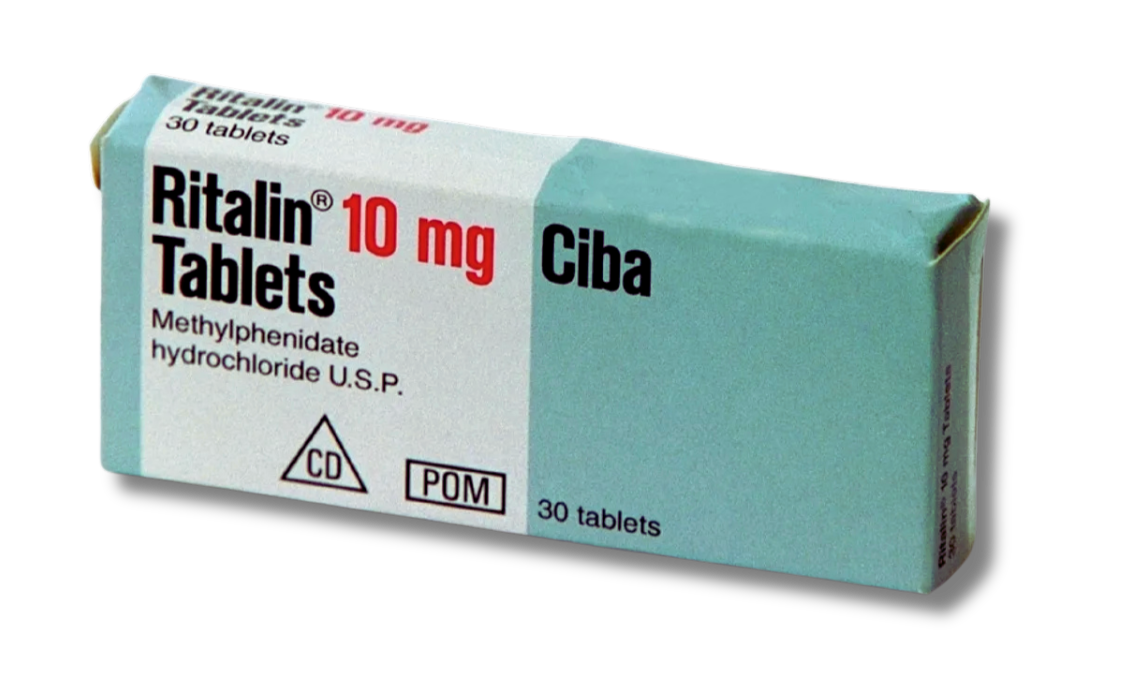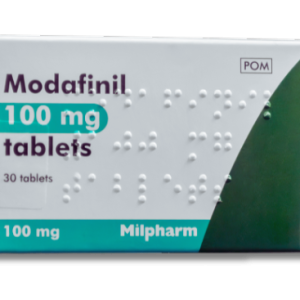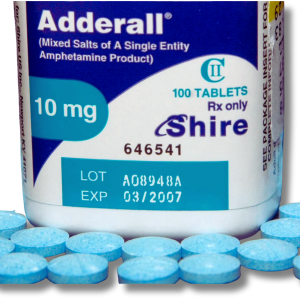Description
Ritalin, or methylphenidate, is a medication mainly used to treat attention deficit hyperactivity disorder (ADHD) and narcolepsy.
It can improve focus, reduce impulsivity, and help manage hyperactivity for many children and adults living with ADHD.
You can get Ritalin in both short-acting and long-acting forms.
Doctors prescribe it, and you really should take it only as advised by your healthcare provider.
Lots of people wonder how Ritalin works, what side effects to expect, and what happens when you start taking it.
Knowing the basics about Ritalin can help patients and families feel a bit more confident using it as part of an ADHD plan.
What Is Ritalin?
Ritalin is a prescription medicine that contains methylphenidate, a stimulant often used to treat ADHD, ADD, and narcolepsy.
You’ll find it in both immediate and extended-release forms, and doctors may prescribe it to adults or kids aged 6 and up.
How Ritalin Works
Ritalin acts as a central nervous system stimulant.
It boosts the levels of chemicals like dopamine and norepinephrine in your brain—these play a big role in attention, focus, and impulse control.
When these chemicals go up, people with ADHD or ADD usually find it easier to concentrate and feel less restless or impulsive.
For narcolepsy, the stimulant effect helps promote wakefulness and cuts down on sudden sleep episodes.
You usually take Ritalin by mouth as a tablet or capsule.
It’s important to follow your prescription exactly—misusing Ritalin can lead to serious issues like addiction, increased heart rate, or high blood pressure.
Some medical conditions, such as glaucoma or severe anxiety, can make Ritalin unsafe, so always talk to your doctor first.
Your doctor should check in regularly during treatment.
Ritalin vs Other Brands
Methylphenidate is the active ingredient not just in Ritalin, but also in Concerta, Medikinet, Equasym, and Delmosart.
These medicines work similarly, but they differ in how quickly they release methylphenidate and how long they last in your system.
| Brand Name | Form | Duration | Approved Ages |
|---|---|---|---|
| Ritalin | Tablet | Short/Long | 6 years and up |
| Concerta | Extended-Release | Long | 6 years and up |
| Medikinet | Short/Long | Varies | 6 years and up |
| Equasym | Extended-Release | Long | 6 years and up |
| Delmosart | Extended-Release | Long | 6 years and up |
Immediate-release Ritalin acts fast but wears off in a few hours, so people often take it more than once a day.
Extended-release versions like Ritalin LA, Concerta, or Equasym XL last longer and are usually taken just once daily—handy for lots of users.
Doctors choose the brand or type based on your health needs, age, and how long you need coverage each day.
Approved Uses
Ritalin is mainly approved for:
- ADHD: For children 6 years and older, adolescents, and adults.
- ADD: Often considered a type of ADHD without hyperactivity.
- Narcolepsy: For both children and adults experiencing sudden sleep attacks.
In ADHD and ADD, Ritalin is usually just one part of a broader treatment plan, which might also include behavioural therapy or counselling.
It’s not generally recommended for children under 6.
For narcolepsy, Ritalin helps people stay awake and alert during the day.
It’s not right for everyone, so a full medical history and doctor’s supervision are necessary before starting.
Available Formulations and Dosage
Ritalin comes in a bunch of different forms, including standard and slow-release tablets.
Each has different strengths and dosing options, depending on what fits your routine or needs best.
Ritalin Tablets and Pills
You can get Ritalin as standard immediate-release tablets or as chewable tablets.
The most common strengths are 5 mg, 10 mg, and 20 mg for tablets, and 2.5 mg, 5 mg, and 10 mg for chewables.
For anyone who struggles to swallow pills, there are orally disintegrating tablets—these come in 8.6 mg, 13.7 mg, and 25.9 mg and dissolve quickly in your mouth.
The tablets are usually scored, so you can split them for dose adjustments if needed.
Take Ritalin with water, and try to stick to a consistent schedule for best results.
Standard and Slow Release Variants
There are two main types: standard (immediate-release) and slow-release (like Ritalin LA or SR).
Immediate-release tablets last about 3-4 hours and might need to be taken two or three times a day.
Slow-release versions stretch out the effect by releasing the medicine over a longer period.
Ritalin LA is made for once-daily dosing in the morning and covers you through school or work hours.
Each slow-release type aims to make things more convenient, so you don’t have to remember multiple doses.
Not everyone reacts the same way, so sometimes doctors try both types to see which fits best.
Dosing Guidelines
For adults with ADHD, doctors usually start with 20–30 mg per day, split into two or three doses, taken 30–45 minutes before meals.
The maximum daily dose shouldn’t go over 60 mg.
Starting low and increasing slowly—usually week by week—is the norm.
Always swallow tablets whole; don’t crush or chew slow-release types, or you’ll mess up how the medicine works.
Only a healthcare professional should adjust your dose, based on how you respond and any side effects.
Taking Ritalin at the same times each day helps keep levels steady and can reduce issues like sleep trouble.
| Formulation | Strengths | Dosing Frequency |
|---|---|---|
| Standard Tablets | 5, 10, 20 mg | 2–3 times daily |
| Chewable Tablets | 2.5, 5, 10 mg | 2–3 times daily |
| Slow Release (LA/SR) | 10, 20, 30, 40 mg | Once daily (morning) |
Effectiveness and Side Effects
Ritalin (methylphenidate) is widely used to manage ADHD symptoms in kids and adults.
It often helps people focus and cuts down on impulsivity, but some folks run into side effects like headaches or trouble sleeping.
Expected Benefits
Ritalin can help people with ADHD pay attention longer and reduce hyperactive or impulsive behaviours.
Both research and real-life experience suggest that many people notice improvements at school, work, or just getting through daily life.
This medicine works by acting on brain chemicals that control movement and attention.
Effects kick in pretty quickly—usually within 30 to 60 minutes—and last about 3–4 hours for immediate-release tablets or up to 12 hours with extended-release types.
Doctors can adjust the dose and type to fit each person’s needs.
Regular check-ins make it easier to track progress and catch unwanted effects early.
Common Side Effects
Ritalin can cause side effects, and here are the most common:
- Headaches
- Difficulty sleeping (insomnia)
- Nervousness or anxiety
- Stomach pain
- Loss of appetite
- Feeling irritable or restless
These tend to show up soon after starting or changing the dose.
Most are mild and fade as your body gets used to the medicine.
If side effects stick around or get worse, talk to your doctor.
Serious symptoms—like chest pain, seizures, or sudden mood swings—need immediate medical attention.
Some doctors suggest taking Ritalin after breakfast to help with stomach upset or appetite loss.
Managing Headaches and Sleep Problems
Headaches are a common complaint with Ritalin.
Drinking enough water, eating regular meals, and taking breaks can help.
If headaches keep coming back or get worse, your doctor might need to tweak your dose.
Sleep problems—like trouble falling asleep or waking up a lot—can also happen.
You might try taking the last dose earlier in the day, sticking to a regular bedtime, or avoiding caffeine in the afternoon and evening.
If sleep issues don’t improve, your doctor may adjust your schedule or suggest more tips for better rest.
Always check with your healthcare provider before changing how you take your medication.
Where and how can I buy Ritalin in the UK?
In the UK, you can only legally get Ritalin with a prescription from a healthcare professional.
It’s a controlled drug and doctors mostly prescribe it for ADHD or narcolepsy.
If you think you need Ritalin, start by talking to your GP.
Usually, you’ll need a referral to a specialist—GPs don’t typically start Ritalin themselves.
After an assessment, the specialist may give you a prescription if Ritalin is right for you.
You can fill your prescription at most community pharmacies, but you’ll need to show your prescription and maybe some ID.
Key Steps to Buy Ritalin Legally:
- Visit GP for referral.
- Get assessed by a medical specialist.
- Obtain a prescription.
- Fill the prescription at a registered pharmacy.
| Method | Legal in UK | Requires Prescription | Notes |
|---|---|---|---|
| NHS / Private Pharmacy | ✅ | ✅ | Most secure and safest method |
| Online UK Pharmacies | ✅ | ✅ | Must be registered in the UK |
| Overseas or Unlicensed Sellers | ❌ | ❌ | Illegal and may be unsafe |
Don’t buy Ritalin online without a prescription or from unlicensed sources—doing so is illegal in the UK and could put your health at risk.
Stick to medical advice and use only approved pharmacies.
Important Safety Considerations
Anyone taking Ritalin should know about the risks of misuse and possible drug interactions.
Ritalin can be habit-forming, and some medications or health problems might affect how safe or effective it is.
Misuse and Dependence Risk
Ritalin has methylphenidate, a stimulant that some people misuse to boost focus or alertness.
Abuse can trigger serious side effects—think heart issues, high blood pressure, or even mental health problems like anxiety or aggression.
People who take bigger doses than prescribed or keep using Ritalin for a long time without a doctor’s supervision might develop dependence.
Those with a history of substance abuse face a higher risk here.
Doctors need to watch for warning signs like requests for early refills or sudden changes in behavior.
Misuse can also raise the chance of seizures, especially for anyone with epilepsy.
If you’ve got that history, it’s something to keep in mind.
Precautions and Interactions
Some health conditions make Ritalin a bad idea—severe heart problems, uncontrolled high blood pressure, or a past marked by severe anxiety or agitation.
If you have epilepsy, you’ll need extra monitoring since Ritalin can make seizures more likely.
Drug interactions matter a lot.
Ritalin can clash with meds for depression, blood pressure, epilepsy, and even alcohol.
Important potential interactions include:
- Monoamine oxidase inhibitors (MAOIs): Mixing these with Ritalin can dangerously spike blood pressure.
- Anticonvulsants: Ritalin might mess with how well these control seizures.
- Other stimulants: Stacking them with Ritalin increases side effects and heart risks.
Patients should tell their healthcare provider about every medicine or supplement they take, even the ones that seem harmless.
Regular check-ins with your doctor keep things safer.
Frequently Asked Questions
Ritalin is a common choice for ADHD in both adults and kids.
It gets compared to other stimulant and non-stimulant meds, and honestly, differences in side effects, price, and how it works can really shape which one people go for.
What are the common side effects associated with Ritalin use?
Ritalin might make you less hungry, mess with your sleep, or give you a dry mouth.
Some folks get headaches or feel a bit dizzy.
Mood swings and stomach aches can pop up, especially when you’re just starting out.
How do the effects of Ritalin compare to Adderall?
Both Ritalin and Adderall are stimulants, but Ritalin uses methylphenidate, while Adderall relies on amphetamine salts.
They both help with attention and impulsivity in ADHD.
Some people swear one works better for them or has fewer side effects—honestly, it’s a bit personal.
What is the standard dosage of Ritalin for adults with ADHD?
Most adults start with 5 mg once or twice a day.
Doctors might slowly bump up the dose, usually aiming for a total of 20–30 mg per day, depending on how you respond.
It’s all about finding what works without too many side effects.
How does Concerta differ from Ritalin in terms of efficacy and dosage?
Concerta uses the same active ingredient as Ritalin but stretches it out in an extended-release form.
Concerta lasts about 8–12 hours, so you take it once a day, while regular Ritalin only lasts 3–4 hours and might mean a few doses.
Both work pretty similarly, but Concerta gives you a steadier effect over the day.
What is the average cost of Ritalin on the UK market?
Ritalin is usually available on the NHS with a prescription, so most people pay the standard prescription charge unless they’re exempt.
For private prescriptions, prices can swing a lot, but you’re looking at roughly £20–£40 a month, depending on dose and pharmacy.
Costs can shift based on where you live and which version you get.
How do Ritalin and Vyvanse differ in their mechanisms of action?
Ritalin (methylphenidate) boosts dopamine and noradrenaline in the brain by blocking their reuptake.
Vyvanse (lisdexamfetamine) works a bit differently. The body turns it into dextroamphetamine, which then increases the release of these neurotransmitters.
Vyvanse tends to last longer overall. Ritalin, on the other hand, kicks in faster but wears off sooner.



Reviews
There are no reviews yet.